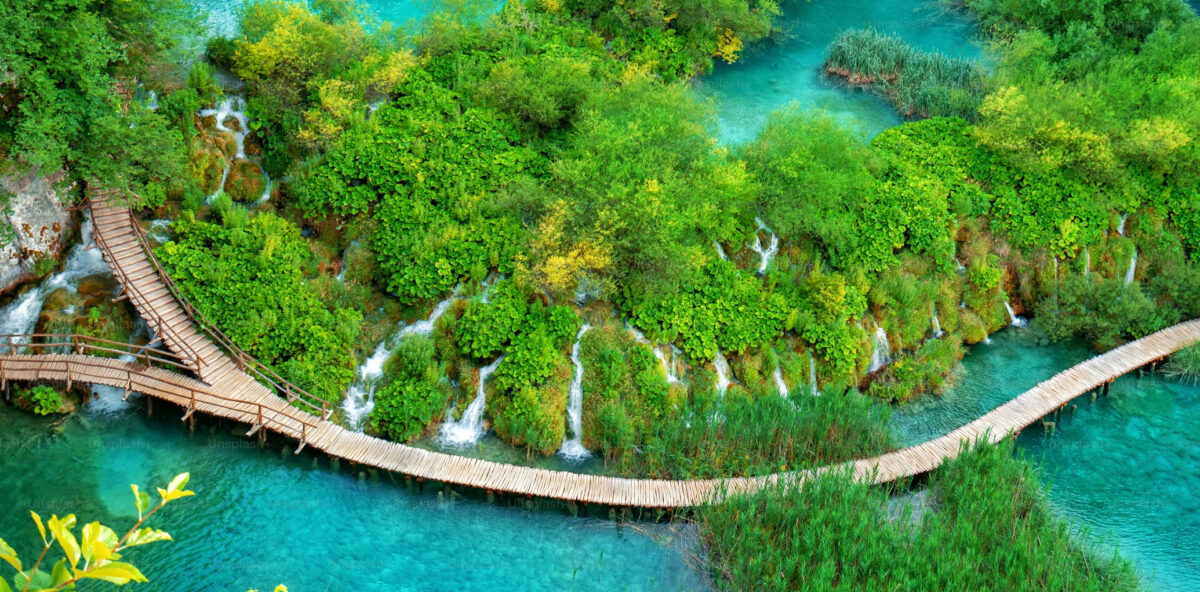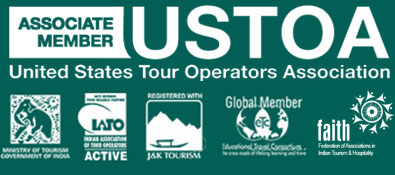Tag: 10 UNESCO Intangible Cultural Heritage of India
The UNESCO Intangible Cultural Heritage of India

Since 2008, UNESCO has been curating a list of cultural heritage practices from around the world that are intangible in nature and is also conceptualizing measures to preserve and pass on these rich heritages. Till now there are 364 cultural practices world wide that made to the Intangible Cultural Heritage list, and with such a vast cultural diversity India contributes 10.
Read about India’s 10 UNESCO Intangible Cultural Heritage that testify our rich cultural past and heritage, listed according to their year of inception.
Representative List of the Intangible Cultural Heritage of Humanity in India
2008
Tradition of Vedic chanting (originally proclaimed in 2003)

Known to be the sacred foundation of Hinduism and a deep source of knowledge, the Vedas are the collection of Sanskrit poetry, philosophy, myth and ritual chants developed and composed by the Aryans over 3,500 years ago. They undoubtedly are one of the world’s oldest surviving cultural traditions. The practice of Vedic chanting is embraced from texts and interpretations collected in the four primary Vedas of Hinduism – Rig, Yajur, Sama and Arharva. These Vedas are expressed in Vedic Sanskrit that offer astonishing insights on the evolution of Hinduism and the early development of its artistic, scientific and philosophical concepts, including the concept of zero.
The values of this traditional heritage are not limited to the oral rendition but also the innovative techniques used by the Brahmins (the highest Hindu caste, originally priests) to preserve the texts developed thousands of years ago.
Practitioners are taught from childhood to ensure that the sound of each word remains unaltered and they follow a unique manner of pronunciation. Although Vedas are still an important part of Hinduism, only 13 Vedic recitation branches have survived from over 1,000 branches. These recitation schools are found in Maharashtra (central India), Kerala and Karnataka (southern India) and Orissa (eastern India).
Ramlila, the traditional performance of the Ramayana (Originally proclaimed in 2005)

Ramlila literally is Rama’s play, a performance of the Ramayana in a series of scenes that include songs, narration, recital and dialogue. It is performed across northern India in autumn during the festival of Dusshera. Ramlilas from Delhi, Ayodhya, Ramnagar and Benares, Vrindavan, Almora, Sattna and Madhubani are renowned across the country and are based on the Ramchitramanas. It is a sacred text developed by Tulsidas in the 16th century to glorify the deeds of Rama, the hero of the Ramayana.
Ramlila recalls the battle between Rama and Ravana and consists of various dialogues through a series of performances lasting 10 to 12 days. Ramlila brings people together irrespective of caste, religion and age. Crowds participate spontaneously and involve themselves in various activities comprising mask making to effigies and lights. However in recent years, the development of mass media has led to a declining number of spectators. Nevertheless this tradition has spread to countries where Hinduism exists and its inclusion in the list brings the hope of revival.
Kutiyattam, Sanskrit theater (originally proclaimed in 2001)

Practiced in the state of Kerala, Kutiyattam is one of India’s oldest surviving theatrical traditions. Originated about 2,000 years ago, it is a concoction of Sanskrit classicism and local traditions of Kerala. In Kutiyattam, eye expressions and the language of gestures play important parts. It takes 10 to 15 years of rigorous training to become an expert performer with sophisticated breathing control and subtle muscle shifts of the face and the body. Kutiyattam is based on elaboration thus a single act may take days and performances may last for 40 days. It is traditionally performed in theaters called Kuttampalams, which are located inside Hindu temples. As it is considered as one of the oldest surviving theatrical traditions, inscribing Kutiyattam in the intangible cultural heritage of India ensures its prosperous future.
2009
Ramman, religious festival and ritual theater of the Garhwal Himalayas, India

Ramman is a festival confined to just 1,800 people of the twin villages of Saloor Dungra of the Painkhanda Valley in the Chamoli district of Garhwal in the Himalayan state of Uttarakhand. It is celebrated in the honour of the tutelary god Bhumiyal Devta. Ramman is organized by villagers and each caste and occupational group have a distinct role in the festival. During Ramman 18 people play 18 characters, wearing 18 masks to dance on 18 beats to celebrate the 18 puranas. It is celebrated among just 186 families of this twin village.
2010
Chhau Dance

With its origin in the eastern states of West Bengal, Jharkhand and Odisa, the Chauu dance is a major egalitarian classical dance form. Traditionally a male troupe dance, it has three distinct styles named after the locations where they are performed, namely Purulia Chau of West Bengal, Serakeilla Chau of Jharkhand and the Mayurbhanj Chau of Odisha. Serakeilla Chau and the Mayurbhanj Chau are mainly performed during the spring festival of Chaitra Parva and Purulia chau is celebrated during the Sun Festival. It is a martial dance form that is acrobatic and athletic in nature with Hindu religious themes found in Shaivism, Shaktism and Vaishnavism.
Kalbelia folk songs and dances of Rajasthan

Kalbelia is a community in Rajasthan who were once professional snake handlers trading snake venom and practicing alternative medicines. Now that the snake handling days are over, Kalbelia rely on entertaining people for their livelihood. They are known for their sensuous form of dancing also called Kalbelia. It impersonates the movement of a snake and is performed on ecstatic occasions.
Kalbelias are reputed for their ability to compose songs spontaneously and improvising it at the same time. The songs are passed on from one generation to the other orally and there are no written texts that exist. Kalbelia like other virtuoso musicians of Rajasthan are unique, rightly marking a place in the intangible cultural heritage of India.
Mudiyettu, ritual theatre and dance drama of Kerala

Mudiyettu is a ritual dance drama from Kerala based on the mythological tale of the battle of Goddess Kali and the demon Darika. This form of dance drama is a community ritual in just 4 districts of Kerala performed during the four-day festival dedicated to Goddess Kali after the summer harvest. It requires 16 people to perform Mudiyettu and the figure of Kali is painted on the floor, called as ‘Kalam’ wherein the spirits of the goddess is invoked. Mudiyettu is considered as an important cultural site to pass on the traditional values, ethics and moral codes of the community to the next generation. The responsibility for its transmission lies with the elders and senior performers, who engage the younger generation as apprentices during the course of the performance, thereby ensuring its continuity and relevance.
2012
Buddhist chanting of Ladakh: recitation of sacred Buddhist texts in the trans-Himalayan Ladakh region, Jammu and Kashmir

In the Buddhist monasteries and villages of Ladakh, the Buddhist lamas (priests) chant sacred texts that represent the philosophy and teaching of the Lord Buddha. Primarily, there are two forms of Buddhism prevalent in Ladakh – Mahayana and Vajrayana comprising of four different sects i.e. Nyngma, Kagyud, Shakya and Geluk. Each sect has several different forms of chanting that are practiced during daily rituals and important days in the Buddhist calendar. Buddhist chanting is undertaken for the purification and peace of mind, and spiritual and moral well-being of the people, to pacify the wrath of the evil spirits and to invoke blessing of Buddha, deities and Rinpoches (a religious teacher held in high regard among Buddhists).
The chants are usually done indoors or accompanied by dance in monastery courtyards. These chants are practiced everyday for world peace and for the personal growth of the practitioner. No doubt that such cultural heritage should be preserved that strive to ensure world peace.
2013
Sankirtana, ritual singing, drumming and dancing of Manipur

Tucked in the valleys of Manipur in the north east of India, Sankirtana is a array of song, dance and drumming that is performed to mark religious occasions and various life stages of the Vaishnavites (followers of the Lord Krishna) of the state. It is practiced at the center of the temple where performers sing and dance narrating the live and deed of Krishna.
Sankirtana was started by the members of the royal family of Manipur in the 15th century and reached its pinnacle in the 18th century. One amazing fact about Sankirtana is that about 100 different rhythmic variations or taals are used while singing.
2014
Traditional brass and copper craft of utensil-making among the Thatheras of Jandiala Guru, Punjab

This unique traditional technique of manufacturing brass and copper utensils comes from the expert craftsmen of Jandiala Guru in Punjab. Unfortunately the usage of copper and brass utensils is dying because people are moving towards utensils made of stainless steel, aluminium or ceramics.
The astonishing fact is that these utensils are believed to be beneficial for health. Eating and cooking in these utensils is also recommended by Ayurveda. However the maintenance of such utensils is time consuming. Hopefully, its inclusion in the UNESCO Intangible Cultural Heritage List may reignite their use.
These are the 10 UNESCO Intangible Cultural Heritage of India that made it to this list. If you think that there are other cultural practices that should be included in the list then just leave us a comment below. If you want to visit the places of such cultural uniqueness than contact us at enquiries@indusdiscoveries.com.





 +1-(765)-586-1210
+1-(765)-586-1210 +44-2030-2689-44
+44-2030-2689-44 +91 124 4361906
+91 124 4361906







 +1-(765)-586-1210
+1-(765)-586-1210 +44-2030-2689-44
+44-2030-2689-44

